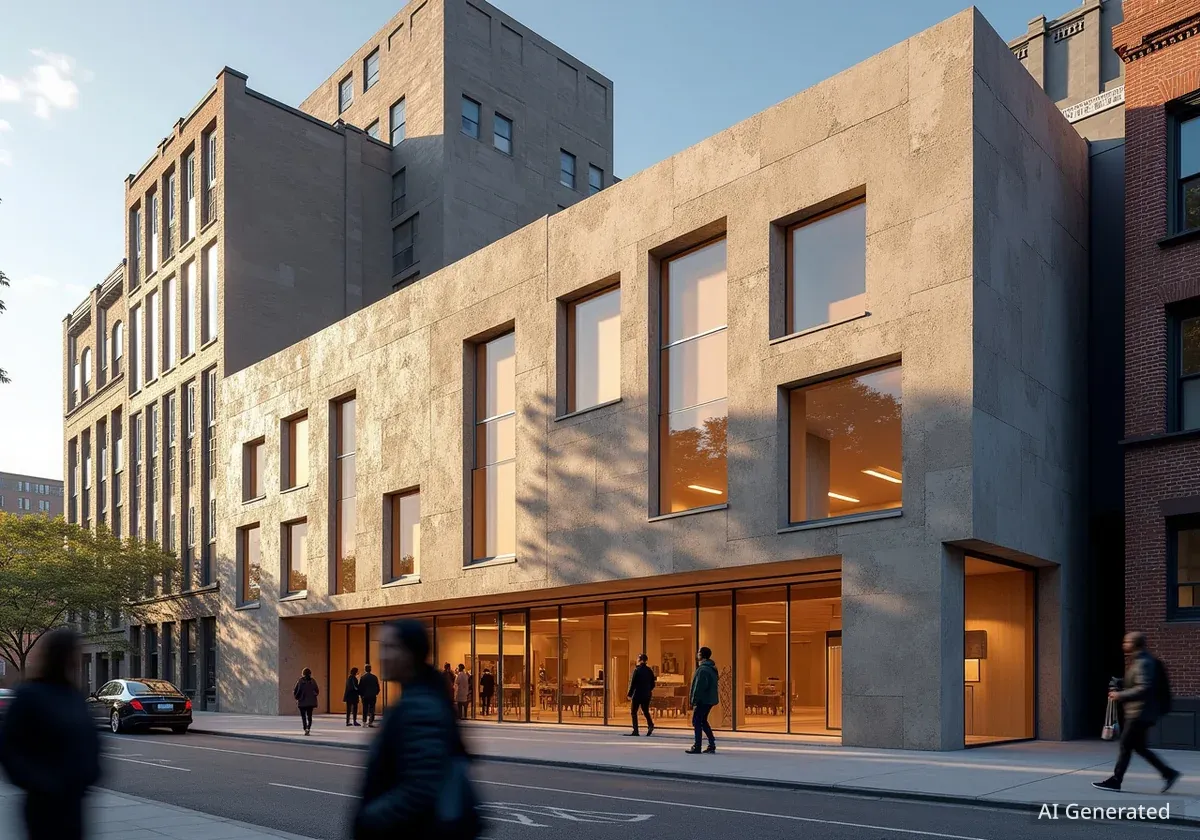Architectural projects across the globe are adapting public spaces and civic institutions to meet evolving cultural, environmental, and social needs. From a mass-timber paramedic station in Toronto to a luxury retreat on Japan's Yakushima Island, these new designs highlight how modern architecture is redefining infrastructure and public life. Key developments include major stadium renovations and sustainable transport terminal upgrades, all aimed at enhancing user experience and environmental performance.
Key Takeaways
- Jean Nouvel designs a stone-and-glass retreat on Japan's UNESCO-listed Yakushima Island.
- Rossetti and WSP plan a significant renovation of Arthur Ashe Stadium in New York City.
- Diamond Schmitt and gh3* break ground on a net-zero mass-timber paramedic station in Toronto.
- Hollaway Studio leads a five-year transformation of LeShuttle's UK and French terminals.
- Projects focus on sustainability, user experience, and integration with natural or urban environments.
Yakushima Island Retreat Blends with Nature
NOT A HOTEL has unveiled its latest project on Yakushima Island, Japan, designed by Jean Nouvel. This boutique retreat is located within a UNESCO World Heritage site, known for its ancient cedar forests and rugged coastlines. The design concept integrates the structure into the island's unique moss-covered terrain. Walls of locally sourced stone and large glass panes allow the building to blend seamlessly with its surroundings.
The low-lying structure is not meant to stand out but rather to appear as a natural extension of the island's topography. It gradually reveals itself as visitors move through the forest. Interiors are designed to blur the lines between inside and outside. They offer framed views of the sea, filter natural sounds like wind and water, and embrace the island's changing weather patterns. Sales for this project are expected to begin in 2026. It joins NOT A HOTEL's network of design-focused retreats across Japan, offering a model that combines private ownership with flexible hospitality services.
"Rather than stand as an object in the landscape, the low-lying structure is conceived as a continuation of the island's topography, gradually revealed as the forest opens around it."
Fact: UNESCO World Heritage
Yakushima Island was designated a UNESCO World Heritage site in 1993, recognized for its ancient cedar forests and unique ecosystem. This designation highlights the importance of preserving its natural beauty and biodiversity.
Arthur Ashe Stadium Undergoes Major Renovation
Rossetti and WSP are preparing for a significant renovation of Arthur Ashe Stadium in Queens, New York City. The work will start immediately after the 2025 US Open. This stadium, originally designed by Rossetti and opened in 1997, is the world's largest tennis stadium. The renovation will involve extensive structural and spatial upgrades. The stadium will remain operational between tournament seasons, minimizing disruption to events.
Planned improvements include a cantilevered expansion of the concourse level. The lower bowl seating will be reconfigured to enhance spectator comfort and viewing angles. New upper-level suites will be added, providing premium hospitality options. The project also features 34-meter-high curving entrance gates, designed in collaboration with Studio Daniel Libeskind. These gates will create a more dramatic and inviting entry experience for visitors.
A new 27,870-square-meter Player Performance building is also part of the plan. This facility will include advanced training areas, medical facilities, and various amenities for athletes. Construction will be phased across three tournament cycles. Major structural work is scheduled to occur between the 2025 and 2026 events. This strategy ensures the venue remains fully functional during competition periods, maintaining its role as a premier tennis destination.
Context: Arthur Ashe Stadium
Arthur Ashe Stadium is located within the Billie Jean King National Tennis Center. It is the main court of the US Open tennis tournament. With a seating capacity of 23,771, it is the largest outdoor tennis-only stadium in the world. The stadium is named after Arthur Ashe, the first African American to win the men's singles title at Wimbledon, the US Open, and the Australian Open.
Toronto Paramedic Station Focuses on Net-Zero Design
Construction has begun on the new Toronto Paramedic Services Multi-function Station 02. Located at 300 Progress Avenue in Toronto, this facility is a collaboration between Diamond Schmitt and gh3*. The 90,000-square-foot building will be constructed using mass timber, a sustainable building material. It is designed to achieve net-zero energy performance, meaning it will produce as much energy as it consumes.
The station will house the Toronto Paramedic Services Education and Development team. Its design features a distinctive sawtooth roof, which supports photovoltaic panels for solar energy generation. Triple-glazed windows and high-thermal-resistance walls contribute to the building's energy efficiency. The project aims to fully offset its energy demand and reduce embodied carbon by 34 percent compared to traditional steel construction methods.
The interior layout is organized around a skylit atrium, allowing natural light to penetrate deep into the building. The station will combine various functions, including logistics areas, classrooms for training, administrative offices, and vehicle bays. These bays will accommodate up to 60 emergency vehicles. Energy-saving vestibules, an all-electric mechanical system, and extensive natural daylighting are integrated throughout the design. Completion of this advanced facility is anticipated in early 2029.
- Building Size: 90,000 square feet
- Energy Goal: Net-zero energy performance
- Carbon Reduction: 34% reduction in embodied carbon
- Vehicle Capacity: 60 emergency vehicles
- Anticipated Completion: Early 2029
LeShuttle Terminals Undergo Sustainable Transformation
LeShuttle has announced a major redevelopment of its UK and French terminals. Hollaway Studio is leading the architectural design, while Engine is overseeing the customer experience strategy. This five-year plan aims to create a more seamless, sustainable, and user-focused cross-Channel travel experience. The first phase of the project is set to begin in September 2025.
The initial phase includes a redesigned check-in area and a new canopy topped with solar panels at the UK terminal. This phase is scheduled for completion by the end of 2026. Subsequent phases will involve refurbishing both Passenger Terminal Buildings. Ticketing systems will be modernized, and new amenities will be introduced. These additions include landscaped pet areas, expanded dining options, and calmer, daylight-filled interiors to enhance passenger comfort.
The project is designed to allow both terminals to remain fully operational throughout the construction period. This ensures continuous service for travelers. The design incorporates modular construction techniques, adaptive reuse of existing structures, and energy-efficient façades. These façades are inspired by geological strata, reflecting a connection to the natural landscape. This comprehensive transformation positions LeShuttle as a model for future sustainable travel infrastructure, focusing on efficiency and passenger well-being.
Did You Know?
LeShuttle, formerly Eurotunnel Le Shuttle, transports vehicles and their passengers through the Channel Tunnel. The tunnel is 50.45 kilometers (31.35 miles) long, with 37.9 kilometers (23.5 miles) of that length under the sea, making it the longest undersea tunnel section in the world.




